Exercises for bass: 5 ways to improve your bass guitar technique
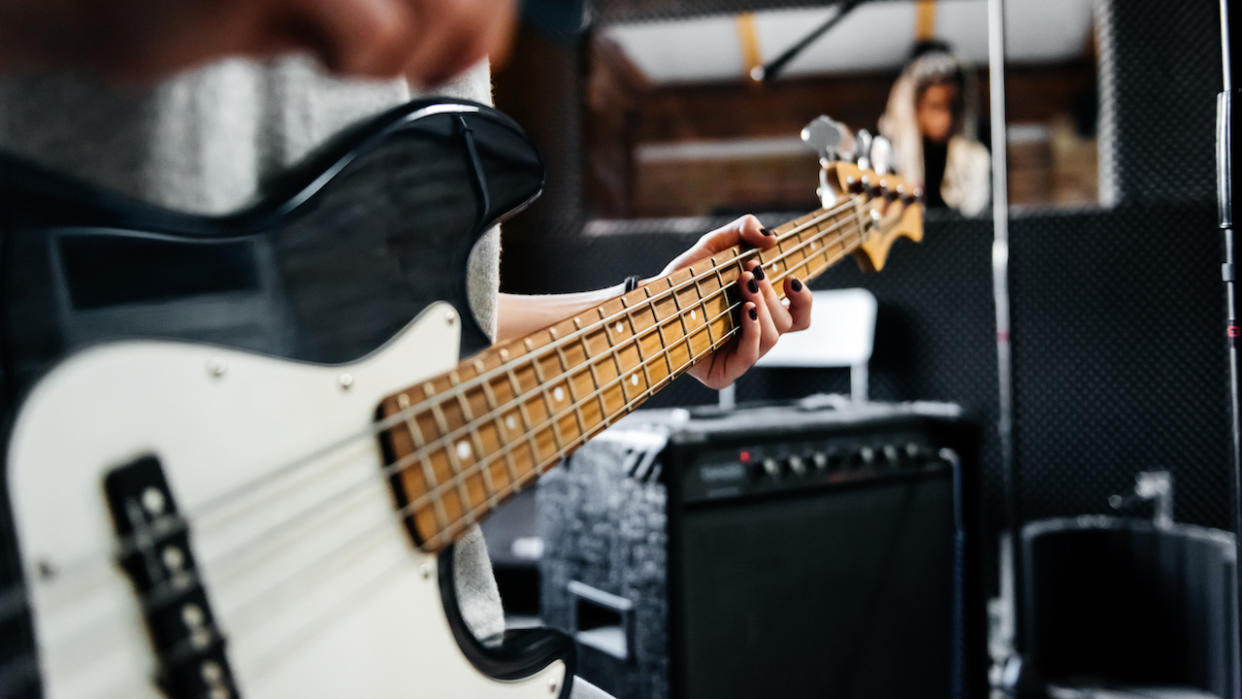
Now, if you're anything like us – or a beginner on the instrument – the thought of working on your bass guitar technique might be a bit off-putting. We know: rocking out on stage is often more appealing than sitting down to work on your bass playing.
But you know what? Work through these exercises and you'll rock out better, because you'll be more confident, more in control and unimpeded by jumbled fingers and cramping wrists.
If you are an experienced bass player, you've probably already made all sorts of less-is-more realizations, but a technique refresher can never hurt. As for the rest, hone your technique now, before you develop any bad habits.
What are you waiting for? Let’s dive in.
1. Finger Independence
To begin with, we've worked out a series of fretting-hand fingerings that pretty well exhaust the possibilities in one position, without any “stretch” fingerings. You can alternate fingers across two strings (Examples 1 and 2), three strings (Example 3), and four strings (Example 4).
Don't try to play fast now – give your hands the time to learn each pattern slowly, since these repetitive examples can be taxing. 10 or 15 minutes at a sitting should be plenty.

Example 1

Example 2

Example 3

Example 4
2. Slap Practice
Slap bass arrived in the late ‘60s – and just like every other technique for bass guitar, there isn't a consensus on the ultimate approach. The technique usually combines a wrist-twisting thumb slap with an index- or middle-finger pop.
The example below has been written in the style of the classic Larry Graham song Hair! What catches some players out is starting the downbeat with a pop rather than a thumb slap – it takes a little practice for that to feel smooth. There are a few 10ths here, as well as some pentatonic figures and grace notes.
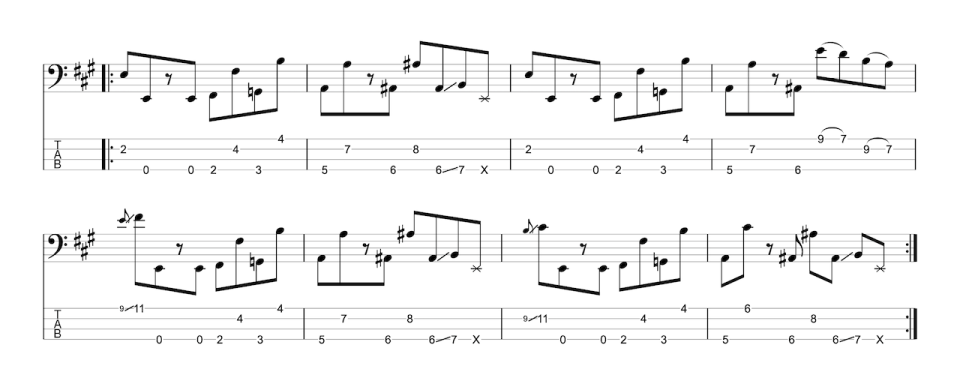
Our next example is in the style of the Red Hot Chili Peppers and reminiscent of Flea’s slap grooves. This line is in G minor and makes use of the G blues scale (G, Bb, C, Db. D, F.G). Note that each of the first three bars begin with the blue note Db, as a hammer on to the D, the fifth of the implied Gm chord.
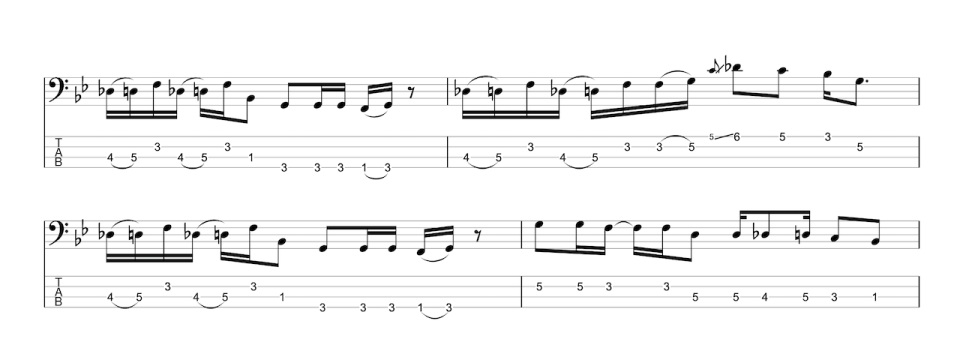
3. Plucking Hand Workout
Next we’re going to play a C major scale in the middle of the neck using all four strings. We'll actually start from B so that we can play three notes per string.
Example 1 will get you familiar with the scale. Start by alternating fingers in your plucking hand except when descending strings. Example 2, which involves playing 3rds, is a bit harder because you’re aiming to come back to the lower string using the same finger.

Example 1

Example 2
4. Double-stops
A ‘double-stop’ is a fancy name for two notes played at the same time. It is merely a two-note chord, but it's important to sonically separate the two notes; if you play both notes in the lower register, the double-stop sounds muddy.
Let's look at some diatonic double-stops. Diatonic means you are playing chords only in one key, in this case G: G major, A minor, B minor, C major, D major, E minor, F# minor, and G major.
We'll play these notes on the E and G strings – start by playing the G on the E string, and the B, which is the high 3rd (also known as 10th interval, or compound 3rd) on the G string. The result is a G major double-stop. Next, move to A on the E string, plus the C on the G string. That is A minor.
Now work your way up the G major scale on just the E and G strings; then play the same double-stops descending.
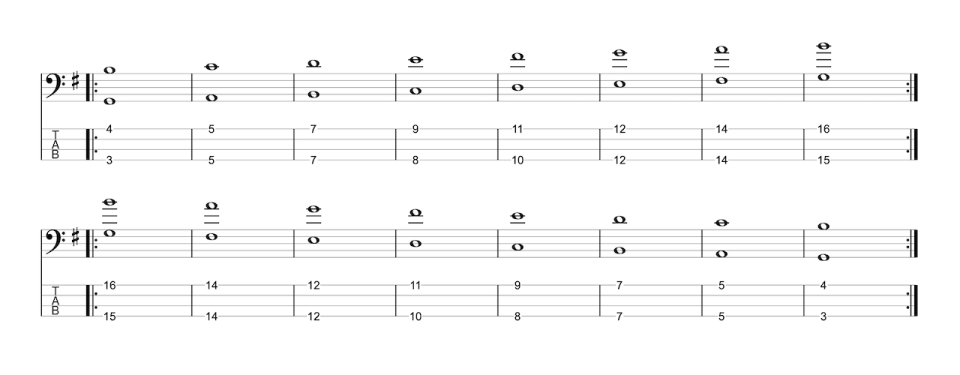
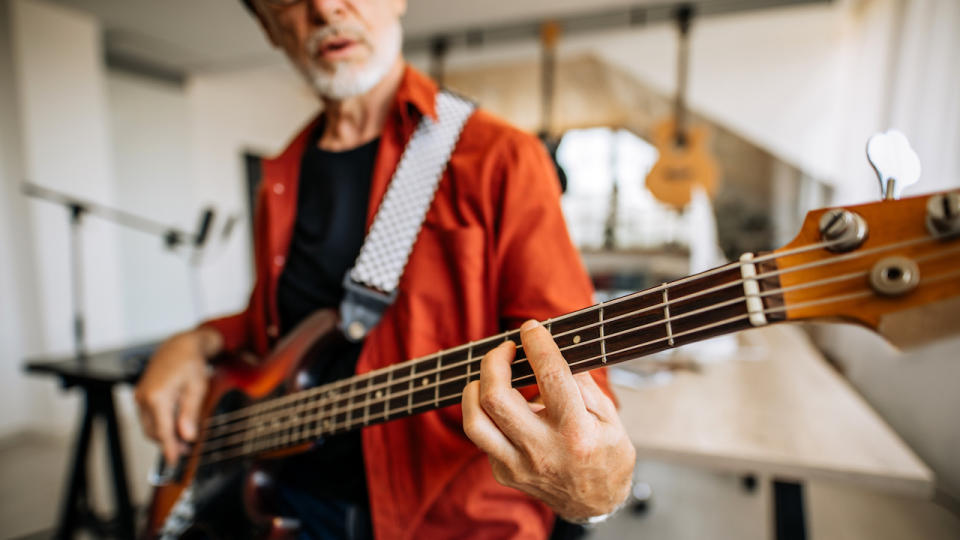
5. Playing with a Pick
Some bassists like using a pick for its brighter tone and snappier attack. Play this next example using only downstrokes, keeping your wrist nice and loose and trying to make each note ring out with the same volume and attack.

Downstrokes are fine, but if you’re playing fast metal you just won’t be able to keep up, so also try an alternating down/upstroke motion. Remember to hold the pick not too tightly, and keep your wrist relaxed and loose.
Because of the tie and push on beat 3 of the first bar, your stroke pattern may change from down-up to up-down strokes in bar 2. You’ll also notice a subtle change of tone and feel.
The riff in this next example should sound familiar. The 1–8th / 2–16th rhythmic pattern is used frequently in metal, and for those of you long in the tooth we have three words for you: Barracuda by Heart!
Played slowly, it will have an almost shuffle-like feel, and when you get the hang of it and speed it up – there are some rather challenging cross-string jumps.


